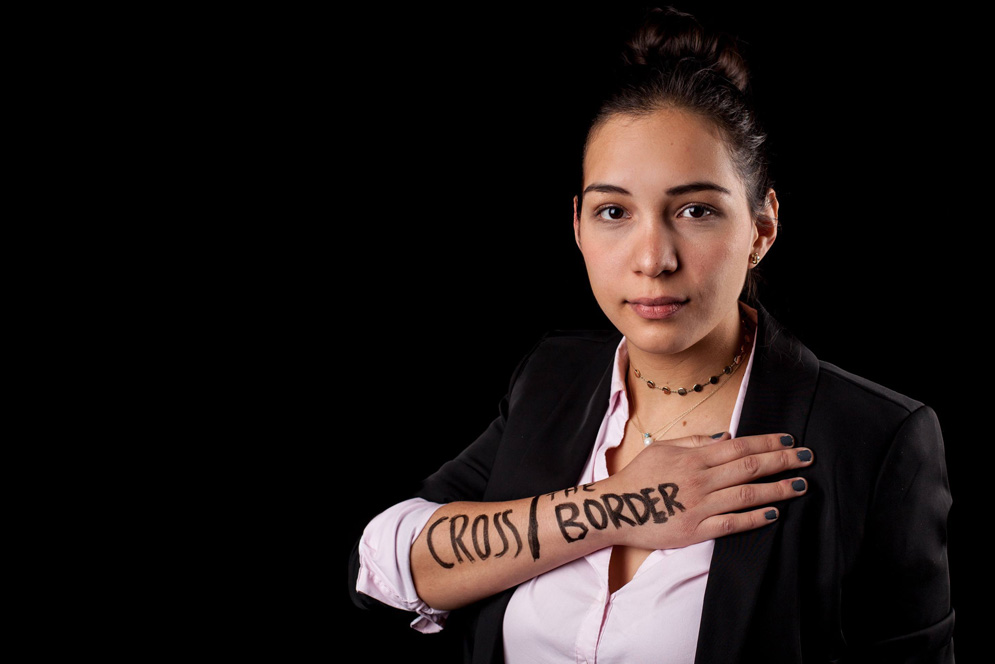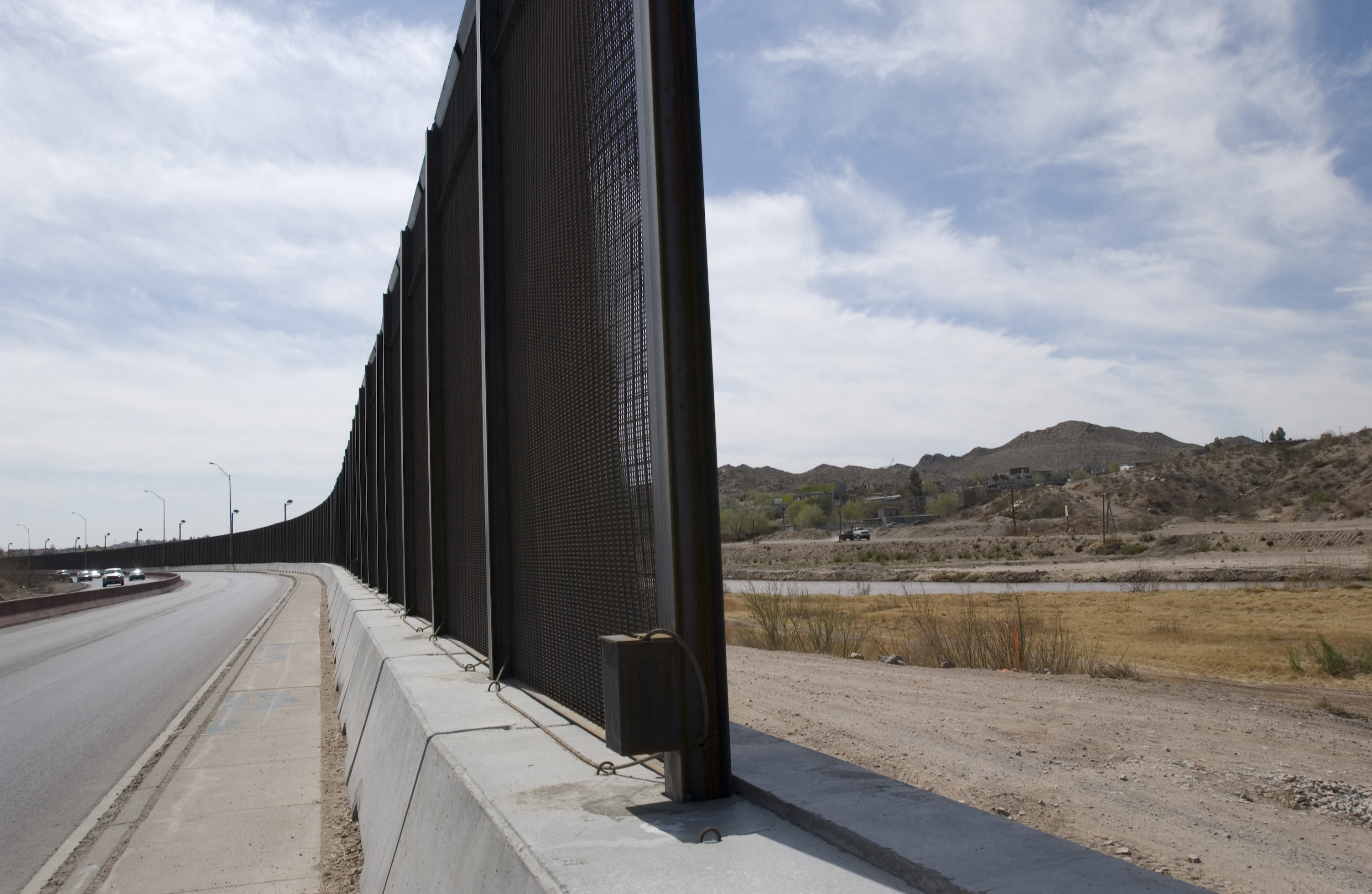Beyond Trump’s Border Wall
CAS student from Mexico on those seeking refuge and opportunities

Barbara Zayas (CGS’17, CAS’19) says growing up in Matamoros, Tamaulipas, Mexico—an area particularly impacted by violence in the war against drug cartels—has inspired her to pursue a career in public policy. Photo by Katie Greenman/Dear World
“Abajo! Rapido!” my dance teacher shouted one hot afternoon when I was 14. “Hide! Fast!” In the middle of warm-up, a sound like fireworks brought everyone in the hip-hop class to a standstill. I did not realize what was happening until I saw armed men on the rooftop of the adjacent building.
I had heard of the shootings between the military and the Mexican gangs—the “War on Drugs”—in my hometown of Matamoros, Tamaulipas, Mexico, but I never imagined I’d be caught in the crossfire. As my teacher pulled me into a corner away from the windows, my head spun with confusion. The incident must have lasted only a few minutes, but it seemed like an eternity. I was speechless and hopeless. The phone lines went down, and all I could think about was my mother.
Mexican drug cartels have challenged the very essence of my community, and my country’s ability to keep its citizens safe. In the period between 2007 and 2014, the war against drug cartels claimed 164,000 homicide victims, many from my hometown. Compared to Mexico, the United States is safe. In most cities, you can stop by a pharmacy at midnight or bike during the day without fear. In Matamoros, we do not leave our homes past midnight. Many Mexicans impacted by violence abandon their country for the United States.
The fluidity of the Mexican-American border—which extends 2,000 miles from California to Texas and is marked by a 600-mile steel fence—is something most foreigners don’t understand. I grew up on this border, between Tamaulipas and the southernmost tip of Texas. Brownsville, Tex., is among the fastest growing places in the United States, thanks to its partnership with neighboring Matamoros.
Traveling from one country to the other is part of the culture of both American and Mexican societies. Mexicans cross the border every day for work, higher wages, and better education; after church on Sunday afternoons, families cross to the American side for lunch. Meanwhile, Americans cross to Mexico in search of cheaper goods and services, like manicures and groceries.

Growing up, I attended a Catholic private school in Brownsville. Since my friends and I crossed the border to get to school, our parents alternated the drive. Traveling from Texas to Mexico was a breeze, no identification required. Meanwhile, entering the States involved car inspections and interrogations from the Border Patrol. On good days, the waiting line to cross the border ranged from 20 to 50 minutes, while on holidays, it could take up to three hours.
I have always felt as though I am not Mexican enough and simultaneously, not American at all. Even as a college student, I am torn between two worlds, where I must learn to be either Mexican or American, depending on where I am and the people who surround me. Mexicans call those who cross the border and study in American schools “gringos” and unpatriotic traitors, while in the United States, we are considered “minorities.”
Being part of two countries and two cultures may seem like an asset, an engaging way to live between two worlds with different languages and cultures. For me, however, living on the border has brought fear and insecurity.
President Donald J. Trump believes that Mexicans who cross the border are illegal immigrants bringing with them a flood of drugs and corruption. US authorities are establishing walls without understanding the people they are trying to keep out, or what is driving them across the border. President Trump’s plan to build another wall—paid for by Mexico—is nothing more than a strategy for distracting the public from the real problems facing the United States, like gun violence.
The fence constructed along the Mexican-American border under the George W. Bush administration cost $2.7 billion—and it didn’t accomplish much. Half of all unauthorized immigrants come into the United States through travel visas; when their visas expire, they make the daring decision to stay in a country where they have no rights to protect them. They are not “rapists” and “killers,” as President Trump claims. They are immigrants seeking refuge and opportunities unavailable in their home country.
The United States is a country of immigrants. While it can be hard for Americans to understand the cruelty and injustice so many Mexicans experience every day, it should not be a stretch to recognize values like freedom and safety as basic human rights.
I encountered violence on a typical summer afternoon. Experiences like this built my character and made me into a more courageous person willing to face social injustice. I am pursuing a career in public policy to equip myself with the power to change my community, my country, and the world.
Comments & Discussion
Boston University moderates comments to facilitate an informed, substantive, civil conversation. Abusive, profane, self-promotional, misleading, incoherent or off-topic comments will be rejected. Moderators are staffed during regular business hours (EST) and can only accept comments written in English. Statistics or facts must include a citation or a link to the citation.